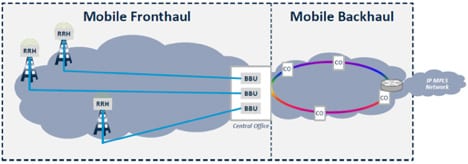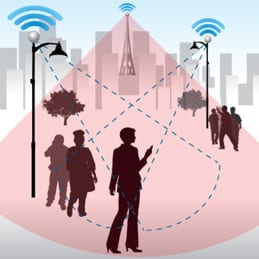As revenue per bit falls and demand rises, mobile network operators (MNOs) are looking for ways to increase network capacity and reduce cost. Trends for accomplishing this include densification, e.g., small cells, cloudification for resource “elasticity”, and centralization of the RAN, i.e., C-RAN. A distinguishing feature of C-RAN is fronthaul. This article will explain why MNOs want to deploy fronthaul and how millimeter wave using electronic beam steering technology can serve and accelerate fronthaul deployment to small cells today.
Fronthaul benefits
Figure 1 defines fronthaul as the connection between the two main parts of the cellular base station, the baseband unit (BBU) and the radio unit (RRH). Fronthaul enables C-RAN by transporting the unprocessed RF signal from the antennas to the remote BBUs. While fronthaul requires a higher bandwidth, lower latency and more accurate synchronization than backhaul, it enables a more efficient use of RAN resources, plus interference and mobility management tools.
Subscribers will notice better performance with C-RAN because they can acquire coverage and capacity from multiple cell sites, not just one as typified by traditional distributed RAN (D-RAN) networks. This comes in handy when, for example, a cell site serving a shopping mall has little capacity left over for those in the parking lot.
It’s worth noting that C-RAN offers lower OPEX than D-RAN in which the RRHs are co-located with BBUs at the cell-site. That’s because cell sites represent 72% of an MNO’s total power consumption. Power and site rent dominate the cost of a D-RAN cell site, so it makes sense to centralize BBUs to economize on space and power.
Fronthaul, CPRI and Small Cells
Leading MNOs in Europe and the US have applied fronthaul to 4G macro cell sites but have mostly hesitated with small cells. That’s because the fronthaul connection between the cell sites and central office —the RRHs to the BBUs — requires mostly fiber to handle the Common Public Radio Interface (CPRI). CPRI was originally developed in 2003 for handling BBU-to-RRH traffic in D-RAN cell sites; that is, between the bottom and top of the mast. Only 6 percent of CPRI traffic goes to end-users. The rest is overhead. ven when a more efficient transport protocol comes along, like eCPRI, CPRI will dominate 4G and, to a lesser extent, 5G, fronthaul networks for years. Indeed, 4G subscriber growth is expected to outpace 5G growth for at least the next ten years, according to OVUM (Figure 2). The Small Cell Forum forecasts that year-over-year 4G small cell installations will not decline until 2024 and will outpace 5G installations through 2025.
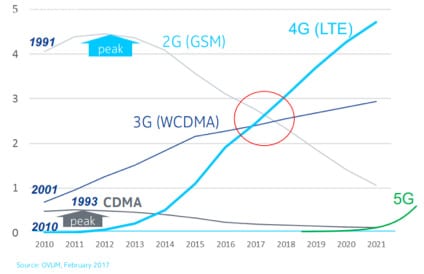
Fig. 2
Millimeter Wave to the rescue
Millimeter wave frequencies, which include the 24, 26, 28 and 39 GHz varieties to be auctioned soon in the US and Europe, can handle CPRI fronthaul traffic without introducing unacceptable latency that results from high compression required by lower frequency solutions. Millimeter wave gives MNOs a way to minimize the use of fiber in deploying CPRI fronthaul to 4G small cells. They can accomplish this by feeding a donor small cell with fiber and using licensed millimeter wave frequencies to wirelessly bridge fronthaul connectivity to another small cell, which bridges to another, and so on, as long as each site is not more than a few hundred yards away from, and in sight of, the other. Not every small cell will require fiber, and all can be upgraded to 5G and a more efficient transport protocol as demand requires.
Small Cell antennas matter
The need for point-to-point fiber between RRHs and BBUs makes fronthaul not only expensive but also logistically difficult because of zoning issues or fragmented ownership of street furniture like utility poles. There will be places where it’s simply too difficult to get permission from the municipality to install small cells on street furniture much less the fiber to serve them.
Figure 3 reminds the reader that municipalities care about small cell aesthetics. The aesthetic appeal of thousands of existing D-RAN small cells has not been helped by them being more visible, numerous, and laden with co-located RRHs and BBUs.
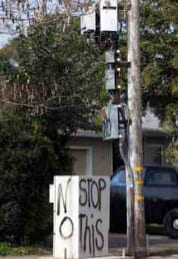
MNOs should endeavor to deploy small cell equipment with the best ability to go unnoticed. It should offer the lowest size, lowest weight (SWaP), and the ability to conform to curved surfaces if necessary. These characteristics would be most impactful in the antenna, which is typically the largest and therefore most visible element of a small cell (Figure 4).
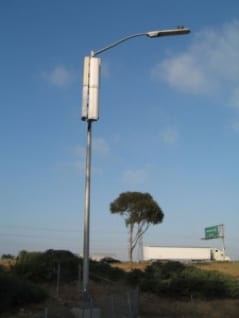
Fig. 4
Electronic beam steering antennas offer the additional benefit of minimizing operations and maintenance (O&M), which is the largest operational expense of a small cell after site rent. This is true because beamsteering antennas simplify installation, configuration and monitoring — no small consideration with tens of thousands of small cells.
About the author
 Kent Lundgren is vice president of marketing for Pivotal Commware and has more than 25 years of wireless industry experience working with IBM, Motorola, AT&T, Wavtrace, Harris and Microsoft. Pivotal Commware is the creator of Holographic Beam Forming, a technology that expands the capacity and spectral efficiency of 4G and 5G networks to address the rapid growth in wireless data consumption. Kent joined Pivotal from Intellectual Ventures, where he conducted market research and strategy.
Kent Lundgren is vice president of marketing for Pivotal Commware and has more than 25 years of wireless industry experience working with IBM, Motorola, AT&T, Wavtrace, Harris and Microsoft. Pivotal Commware is the creator of Holographic Beam Forming, a technology that expands the capacity and spectral efficiency of 4G and 5G networks to address the rapid growth in wireless data consumption. Kent joined Pivotal from Intellectual Ventures, where he conducted market research and strategy.
The post New considerations for deploying fronthaul to Small Cells (Reader Forum) appeared first on RCR Wireless News.

